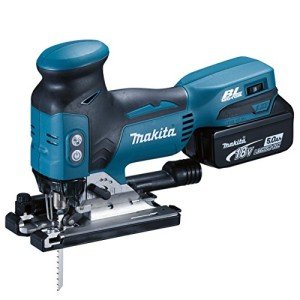
Mitter Saw
FollowOverview
-
Sectors Automotive Jobs
-
Posted Jobs 0
Company Description
What’s The Current Job Market For Mitresaw Professionals Like?
Understanding the Mitre Saw: A Comprehensive Guide
When it comes to woodworking and building, precision is essential. One tool that sticks out for its ability to deliver precision in cutting angles is the mitre saw. This versatile tool is a vital part of many craftsmen’s toolkit, Buy Mitre Saw whether they are tackling small home projects or big renovations. This post aims to explore the mitre saw’s functionality, types, functions, and how to choose the best one for your requirements.
What is a Mitre Saw?
A mitre saw, also referred to as a chop saw or drop saw, is a power tool utilized to make exact crosscuts and mitre cuts in woodworking. Mitre saws can cut details at different angles, which makes them extremely versatile for various jobs, such as framing, molding, and furniture-making.
How Does a Mitre Saw Work?
Mitre saws use a circular saw blade mounted on a swinging arm. The user positions the workpiece against the fence and lowers the blade down onto the product at the preferred angle, leading to a tidy cut. The capability to lock the blade in place while cutting makes sure precision.
Types of Mitre Saws
Mitre saws come in numerous variants, each created for particular purposes. Here are the most typical types:
| Type | Description | Best For |
|---|---|---|
| Standard Mitre Saw | Standard model developed for making straight cuts or mitre cuts. | General crosscutting jobs. |
| Compound Mitre Saw | Features the ability to tilt the blade for bevel cuts in addition to mitre cuts. | Crown molding and angled cuts. |
| Double Compound Table Mitre Saw Saw | Combines the functions of a compound mitre Mitering Saw, allowing bevel cuts on both sides. | Complex angles and trim work. |
| Sliding Mitre Saw | Incorporates a sliding system to increase cutting width and capacity. | Wider products such as lumber. |
| Digital Mitre Saw | Functions digital screens for better precision in angle measurements. | Precision-sensitive jobs. |
Selecting the Right Mitre Saw
Selecting the ideal mitre saw depends mainly on the kind of jobs you plan to undertake. Here are some factors to think about:
-
Type of Cuts Needed: Determine if you need only straight cuts, mitresaw or if you require to make bevel cuts as well.
-
Size of Material: If you typically work with broader pieces, a sliding mitre saw will use more capacity.
-
Portability: If you need to transport your saw frequently, a lightweight design would be necessary.
-
Power and Speed: Higher amperage shows more powerful saws, but it’s essential to balance power with maneuverability.
-
Price: Mitre saws come in numerous cost varieties. Evaluate your budget plan while guaranteeing you don’t sacrifice important functions.
Important Features of a Mitre Saw
When picking a mitre saw, certain functions can significantly improve the user experience and precision of cuts:
- Laser Guide: Projects a line onto the product, making sure precise cuts.
- Bevel Adjustment: Allows fast and simple angle adjustments for bevel cuts.
- Dust Collection: Built-in functions help handle sawdust and enhance visibility and tidiness.
- Fencing System: A robust fence makes sure accurate assistance while cutting.
- Weight and Portability: Lighter saws are much easier to move, while heavier ones generally offer more stability.
Using a Mitre Saw Safely
Safety is critical when using any power tool, including mitre saws. Here are some vital security pointers:
- Always wear suitable personal protective equipment (PPE), consisting of safety glasses and hearing protection.
- Make sure the saw is safely secured to a stable surface area to avoid motion during cutting.
- Keep hands at a safe distance from the blade and prevent others from standing close.
- Frequently check blades for sharpness and replace them when needed.
- Make certain the electrical connections are secure, and avoid cutting in damp conditions.
FAQ About Mitre Saws
Q1: Can I utilize a mitre saw for cutting metal?
A: While some mitre saws can be adapted with unique blades for cutting metal, it’s mainly designed for wood. Constantly inspect the manufacturer’s specifications.
Q2: What blade size should I utilize for my mitre saw?
A: Common blade sizes are 10-inch and 12-inch. The size you require depends on the thickness of the material being cut.
Q3: How often should I alter the blade on my mitre saw?
A: Blade life varies based upon use. Check the blade regularly and change it if it reveals signs of dullness or damage.
Q4: Can I make compound cuts with a basic Mitre Angle Saw saw?
A: No, only compound and double compound mitre saws enable bevel cuts in addition to mitre cuts.
Q5: What is the difference in between a sliding Mitre Hand Saw saw and a compound mitre saw?

A: Sliding mitre saws have a slide mechanism that extends the cutting capacity, while compound mitre saws can only tilt for angled cuts.
The mitre saw is an important tool for anyone wanting to improve their woodworking projects with precision and ease. With different types, features, and safety preventative measures to think about, comprehending this tool empowers users to make educated choices tailored to their particular requirements. Whether you are a skilled professional or just beginning, a mitre saw can considerably raise your workmanship. By taking the time to select the best design and practicing precaution, you can make sure a successful woodworking journey.
